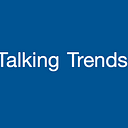Servant Leadership - Lead to Serve - in conversation with James Rosseau Sr.
James Rosseau Sr. is the founder and CEO of The Corelink Solution, a non-profit organization that is committed to revitalizing communities through programs that empower the next generations to reach their potential. As a natural communicator, empowering others to reach their full potential is his passion. He supports creating infrastructure, systems, and processes that allow people to live their purpose — in other words, a servant leader.
Styles of leadership are often debated — each one has pros and cons. Servant leadership is one of the most up-and-coming methods of effectively leading people and is rooted in your organization as well. Tell us about this particular leadership style — what works and what doesn’t?
“In my opinion, servant leadership is revolutionary. A serve-first mindset and a focus on empowering and uplifting employees is how I do my job. Serving instead of commanding, showing humility instead of brandishing authority, and always looking to enhance the development of staff members — all help unlock potential, creativity, and a sense of purpose. The end result is usually happier employees and better results.
“I would describe myself as a servant leader operating with a stewardship mindset. My idea has been: I am in a certain role (and seat) for a limited amount of time, so I should leave having made a positive impact. By positive impact, I mean I want to leave the organization in a better place for the next leader and next set of stakeholders. To implement this mindset, I once created an inverse organization chart with myself at the bottom; being a very visual person, this helped me envision the leadership I was aiming for, and maybe even more importantly, share that with my team.
“Transitioning to new roles during my career, that of president of AllState and then LegalShield, I progressively developed my own personal routine, or approach to my leadership style. I focused on three things: Purpose, People, and Processes.
1. Purpose — Identifying the purpose of the organization, both for the corporate level and for every department. Collectively knowing the purpose of the company, and working toward that common goal is what unites the employees of an organization.
2. People — Every individual needs to find their role as part of the larger purpose — so they feel involved and inspired. Every employee’s individual passion and purpose must be intertwined with the purpose of the organization — that’s the best way to unlock and maintain their energy. Another important factor is understanding in what direction an employee wants to go. As a leader, I need to keep them on the right path and support their goals.
3. Processes — All employees need to understand the three key processes. How do we make money (our business model)? How do we operate internally and externally (our operating model)? How we make and execute decisions (our governance model? All these are key in futher helping people contribute at the highest level.
“As a leader, I have four jobs that I focus on — I am a coach, a counselor, a cheerleader, and a confidant. I guide people when needed, clap for them publicly when a job is well done, and finally act as a confidant when they want to share their fears or ambitions. It’s the only way to do it, and I love it!”
Thanks, James, this sounds like a great approach.
